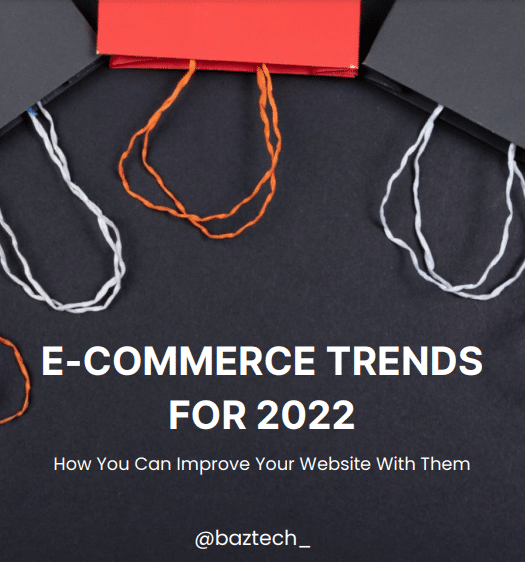Have you ever come across a major brand that didn’t have a logo? No? This is due to the fact that there are none. A logo has a significant impact on how customers perceive your company. As a result, you naturally want your logo to stand out. But how are you going to get there?
Don’t be concerned! This ultimate guide to logo design will teach you everything you need to know about creating the ideal logo for you and your company.
Learn how to design a logo by establishing your brand’s identity and understanding what makes a great logo, as well as selecting the proper design choices and navigating the design process.
The most essential steps in creating a logo are listed below
Table of Contents
1. Realize why you require a logo
You’re attempting to attract the right customers and make them fall head over heels with your business, just like you’re trying to attract the right date. Consider your brand to be the image on your dating profile. It’s what will pique people’s curiosity and lead them to want to learn more about you (or swipe left if you’re not for them). Isn’t it true that you want to look your best?
Your logo will have a significant impact on the first impression your company makes: it will inform people about your brand and help them decide if it is suited for them.
You want to make sure your logo is done well because it is such an important component of your brand. Your logo will appear on all of your branding materials. Your website, packaging, and business cards will all reflect it back to your customers. Make the most of it! A superb, professional logo design has the ability to represent not only what you stand for, but also how you want to be perceived. It will also help you make a strong first impression and stand out from the crowd.
2. Define your brand image
You want your logo to convey the individuality of your company. And in order to accomplish so, you must first comprehend your brand’s core personality. It will be lot easier for you to make design decisions that complement and complete that picture if you have a clear sense of what makes you special and what your brand is all about.
To get to the bottom of your brand identity, ask yourself the following questions:
- Why did we create this company in the first place?
- What are the principles and beliefs that we hold dear as a company?
- What do we excel at that no one else does?
- What makes us unique?
- What three words would you use to characterize our company’s brand?
- What three words would we like our clients to use to characterize us?
3. Look for design inspiration
The quest for logo inspiration can be the most difficult component of the design process. Fortunately, we have some pointers for you that will make things a lot easier.
Begin with a brainstorming session
Perhaps you are a conceptual thinker who prefers to start with linguistic thoughts. A good brainstorming session may be exactly what you need to nail down the design and feel you want. Here are three stages to assist you come up with the greatest unique logo concepts:
1. Stick to the brainstorming rules: Brainstorming is all about getting all of your ideas out (even the truly stupid ones) and writing them down. Even a bad proposal can start a discussion that leads to a brilliant solution.
2. Consider your target market: Create a list of terms that represent your brand and how you want it to be perceived. Consider yourself a member of your target demographic, and keep in mind what matters to them.
3. Involve everyone: A one-person brainstorming session is wonderful, but variety is what will make the magic happen. Inviting people from all departments, as well as friends and business partners, is a good idea. The more viewpoints you have, the better.
When conceptualizing your logo, don’t be scared to think outside the box and be a little unconventional. See how logos like Crypto Caveman’s and Sweet Trip’s cleverly blend ideas you wouldn’t normally associate with one other, like cryptocurrencies and cavemen or a honey bee and a map pin? These unique logo options help them convey personality and differentiate themselves from the competition.
Create a moodboard
A mood board may be the ideal tool for you to become inspired if you’re a visual person. You can either make a physical board or a digital one by cutting out and pinning printed images (Pinterest would be the obvious choice here). Simply collect all of the images that appeal to you, whether they’re other logos, color combinations, artwork, or designs. You’ll notice that your mood board quickly reflects the style and design aspects that you choose. Are you looking for a good location to start? We recommend that you look through the 99designs logo inspiration gallery.
Consider how your company can be represented in your logo. Simply Rooted is all about local, down-to-earth food, and its vintage logo, which features hand-drawn root veggies, perfectly symbolizes that. If you want to get a similar look, include photos of antique logos, hand-drawn graphics, and organic forms and colors in your mood board. Consider how the Rugged logo expresses their “rugged” company identity in a powerful, rough-looking word mark while maintaining a sumptuous vibe with a reflective gold appearance. You may use your mood board to bring all of these pieces together.
4. Look into the competition
Where should you go if you want to steal or borrow ideas? You have a competitor! Examine what’s presently available, what resonates with your target demographic, and what you should avoid. Consider how you may emphasize the contrasts between you and those other firms in your logo design while stalking those other businesses.
Make a point of distinguishing yourself from the competition. If everyone else in your field is going monochrome, you might want to use some color to stand apart. If everyone else’s design is traditional, perhaps a colorful and trendy logo will stand out.
Examine how the three accountant logos communicate their brand characteristics in the examples above. Orthrus Ventures’ lion logo is classic and reliable, but Tidy Finance’s logo is trendy and attractive. If you’re looking for something more approachable and fun, let Hot Toast’s vibrant colors and quirky illustration inspire you.
5. Select a style of design
It’s time to start translating your brand into design now that you have a strong sense of who you are and what you want to achieve. Colors, forms, and visuals, as well as text, all play a role in this design. Isolating each component and what it can accomplish for your logo will allow you to handle things one step at a time rather than becoming overwhelmed by the entire design at once.
When it comes designing your logo, the first step is to choose the proper design aesthetic for your company. There is no one-size-fits-all style for everyone; simply what works best for your company.
Classic
Trendy logos can be thrilling and engaging, but they can rapidly become obsolete. A classic style has more longevity and might help you reach a larger audience. This style keeps things simple and avoids using extravagant color palettes, images, or fonts. People will perceive you as trustworthy and down to earth if you dress in a traditional style.


Vintage or retro?
There’s a reason that vintage and retro design have been popular for so long. They instantly transport you to another time and elicit romantic nostalgia. A vintage logo communicates to customers that you value history and that whatever you sell is done well. This look is perfectly complemented by worn and hand-illustrated logos in brown and beige color palettes.
Minimalist and modern
To show how new and modern they are, brands frequently adopt a clean and minimalist look. A lot of whitespace, minimal details, and simple lines are used in this design, resulting in streamlined, pared-back logos. Your customers will notice that your brand is current, hip, and knows what matters if you use a minimalist and modern style.


Unusual and amusing
This is a common choice for firms with a target consumer who is young (or young at heart). Colorful and adorable, fun and quirky style frequently incorporates symbols or images to generate a cheerful and friendly vibe. To allow your brand’s playful personality come through, use a whimsical mascot or a lovely artwork.
Handcrafted and handmade
Handcrafted style sends a clear message: this brand is unique and stands for high-quality craftsmanship. To fully drive home the idea, the style works well in combination with other aesthetics, such as vintage. However, for a simple and elegant or a bright and young look, it can be coupled with minimal and entertaining designs.

You can’t make up your mind?
Of course, these styles aren’t mutually exclusive; simply mix and match to create your own unique look. For example, the quirky, illustrated logo for The Crafting Cactus exemplifies how your business can be both homemade and enjoyable at the same time.

6. Choose a logo that is appropriate for your business
Lettermarks (or monogram logos)
Lettermark logos are a terrific way to simplify your company logo, particularly if your name is long or difficult to recall. Many companies, such as HP, CNN, and H&M, choose to be known by their initials. These monograms are wonderful for minimalist logos, but they don’t do a great job of describing what your company is all about.
Wordmarks (or logotypes)
Wordmarks are a simple method to include your company’s name into a design. They rely on typography to give them personality and recognition value—just look at the ONE wordmark logo. This could be the ideal technique to bring your brand’s name to the forefront if you have one.
Pictoral marks(or logo symbols)
When we hear the word “logo,” we think of pictorial marks or logo symbols. They are identifiable iconographic graphics that reflect your brand with a visual representation. You might go for something simple or something more sophisticated, but make sure it’s a sign that connects to your company in a unique way. These are frequently accompanied with a wordmark (so customers recognize your name… at least until you reach the level of Apple and Target in terms of brand recognition).

Abstract logo marks
Abstract logo marks, rather than a familiar symbol, are geometric forms that don’t immediately relate to an existing image but instead produce something wholly unique for your business. Your firm will be condensed into a symbol that is absolutely distinctive to you with an abstract logo mark. Printy’s logo demonstrates how a modern abstract symbol can look while yet having a lot of personality. Learn the meanings of different geometric logo forms if you want your abstract logo to evoke a specific mood or sensation.
Mascots
Mascot logos are a fun way to add individuality to your brand. Like the happy Gadget Mole above, they’re usually bright, cartoonish characters who represent your company in a family-friendly and approachable way.
Combination marks
A combination mark does exactly what it says on the tin: it combines a symbol with a word mark to create a logo that is instantly identifiable. Designer ludibes uses the Brite Side logo to demonstrate how the brand name may be put next to the symbol or integrated into the graphic element. Both parts will be associated with your brand, allowing you to use them separately or together.
Emblem
Emblem logos are often a blend of word and visual elements, similar to combination marks. Text is generally included into a symbol or emblem, such as badges, seals, or crests. The Rockwell Lighthouse emblem demonstrates how traditional shapes may give you a vintage and timeless look.

7. Pay attention to the color scheme
Colors can have a variety of meanings. Color psychology is complicated, but to summarize, colors are associated with specific emotions and thoughts. Check out this in-depth guide on logo colors and their meanings to discover more about color theory.
- Red is the color of elation, passion, and rage. If your brand is loud, youthful, and wants to stand out, this is a terrific option.
- Orange is a considerably less common color than red, but it has the same amount of energy. This is a lively, energizing, and fun color.
- Yellow is a great color to use if you want to appear approachable and welcoming. It has a cheery, budget-friendly, and youthful vibe.
- Green is a very flexible color that may be used for any brand. It’s especially suitable for anyone who wishes to develop a bond with nature.
- Blue is a very classic and popular color. It is peaceful and cool, and it represents maturity and dependability.
Purple: Purple is a great color to wear if you want to look opulent. Purple can be secretive, eclectic, or feminine depending on the tint. - Pink: If you’re trying for a girly look, nothing beats pink. But wait, there’s more! Pink can give your brand a grown-up, stylish, yet still youthful and feminine appeal with tones like pastel rose, millennial pink, or bright magenta.
- While brown may appear to be an odd color choice at first, it is ideal for rugged and manly antique logos. It can offer your brand a handcrafted, one-of-a-kind, and aged appearance.
- Black is a wonderful choice if you want to go for a sleek, sophisticated, and luxury style. If you want to keep things basic, a black and white logo is the way to go.
- White: Do you want a clean, modern, and minimalistic style for your logo? Make your logo as white as possible. It’s a neutral color that goes with everything and adds a fresh, youthful, and cost-effective touch.
- Gray: If you want to look old, traditional, and serious, gray is the hue to go with. Darker tones appear to be more mysterious, but lighter shades appear to be more approachable.
Of course, you don’t have to stick with a single-color monochromatic logo; instead, you can blend numerous logo colors to create a whole brand color story. Take a look at the color wheel to find colors that go well together.
- On the color wheel, complementary hues are opposite each other. They bring out the finest in both colors and give the appearance a lot of movement.
- On the wheel, colors that are similar fall near together. These will go nicely together if you want your logo colors to be harmonious.
- Three equal parts of the color wheel are used to create triadic hues. Choose them for a bold and stimulating impression.
8. Choose the appropriate typography

Choose a font that goes well with your logo and completes it. There are four primary sorts of fonts you can use to create a unique look for your logo:
Serifs fonts
Notice how the font gives the Avalon logo a sophisticated and timeless appearance? Serif fonts may give your logo a timeless, high-end appearance. Serifs are the small “feet” at the end of a letter that give it an antique appearance. They are extremely adaptable and go with any style, but they look especially good with vintage, elegant, or classic styles.
Sans serif fonts
Sans-serif typefaces are ideal for a modern, clean appearance. They lack the little feet that serif fonts have, giving them a sleek and elegant appearance. This is ideal for modern firms, such as the Delta Salt logo, which is both basic and sleek.
Script fonts
Script typefaces have a handwritten feel to them. There is a tremendous range out there, from exquisite calligraphic fonts to easygoing and down-to-earth scripts. Use them to make your brand stand out, like the Moon Rabbit logo shown above.
Display fonts
Display fonts are highly styled decorative typefaces that really capture the eye. Take a look at the Perfect You logo above, which features a display typeface for a fun 70s vibe.
When you blend several logo typefaces, your typography can become really effective. This guide on choosing typefaces for your brand will show you how.

Now that you’ve figured out what your logo’s different aspects are, you need to make sure they all function together. You want to pair them in a way that is harmonic in order to achieve the desired effect.
Voany’s logo, which features a combination mark in an organic shape, a traditional serif font, and a natural brown and beige color palette, leaves no mistake that it is an attractive, natural high-end business. Reflect Academy, on the other hand, creates a fresh and distinctive style by blending a modern font with colorful and abstract elements.

9. Consult with your designer
You’re ready to start designing now that you’ve evaluated all of the relevant style criteria. There are a variety of ways to obtain a logo, so think about which one is best for you. Are you looking for a logo agency, a logo contest, a one-on-one project, or a logo maker? Varied costs correspond to different attributes, and each option has its own set of advantages and disadvantages. Check out this comparison of the top ways to get a logo designed to get a good idea of your possibilities for acquiring a logo. More information on how much your logo design should cost may be found here.
We may be prejudiced, but we believe that entering a logo design contest is the most effective way to obtain a logo. The first rule of working with your designer is to communicate openly to ensure that your design is excellent. Writing a concise creative brief is your opportunity to communicate with your designer about who you are and what you require. Give them as much information as possible about your company and style so they can develop something truly unique for you.
It may require a little faith in your designer at times, but try to be receptive to recommendations. Remember that your designer is an expert who understands what creates a good logo. Giving designers a lot of precise and clear input is how they learn what you appreciate. It may sound corny, but it’s true: the best design comes from collaboration between you and your designer.
10. Evaluate your logo variations
Evaluating your logo options can be hard, so get some feedback from friends, potential customers and colleagues to help you make a decision.
A excellent logo is instantly identifiable, conveys your brand’s message, and distinguishes you from the competition. A good logo is professional and blends in well with a company’s identity. A fantastic logo must also work at any size and in each location where it will be used.
11. When it comes to logo design, there are a few things you should avoid
When it comes to developing your logo, there are a few basic traps to avoid. Here are a few things not to do:
- Don’t fall prey to your industry’s stereotypes. Because you’re a
- Make things as simple as possible. For a memorable (and printable) logo, keep it simple.
- Don’t attempt to be too fashionable. Trends are great, but make sure your logo isn’t going to seem stale in three years.
- To save some money, don’t settle for a low-quality logo. Your logo is not the place to cut corners, and you typically get what you pay for. dentist, you need a tooth in your logo. No way! Here’s how to keep your logo from looking like everyone else’s.
12. Make your logo design a part of your overall brand.
What’s next now that you’ve learned how to create a logo?
You’ve built the best foundation for all of your branding material, whether it’s business cards, packaging design, or site design, once you’ve produced your logo. Your logo is the beginning point for your brand collateral because it sets the tone for your style, color palette, font, and overall look and feel. Your designer will be able to develop a seamless look for you because it sets the tone for your style, color palette, typeface, and overall look and feel. And with that, your company is ready to reveal its new look to the world!
Do you want us to create the perfect logo for your business? Contact Us to get started.








One Response